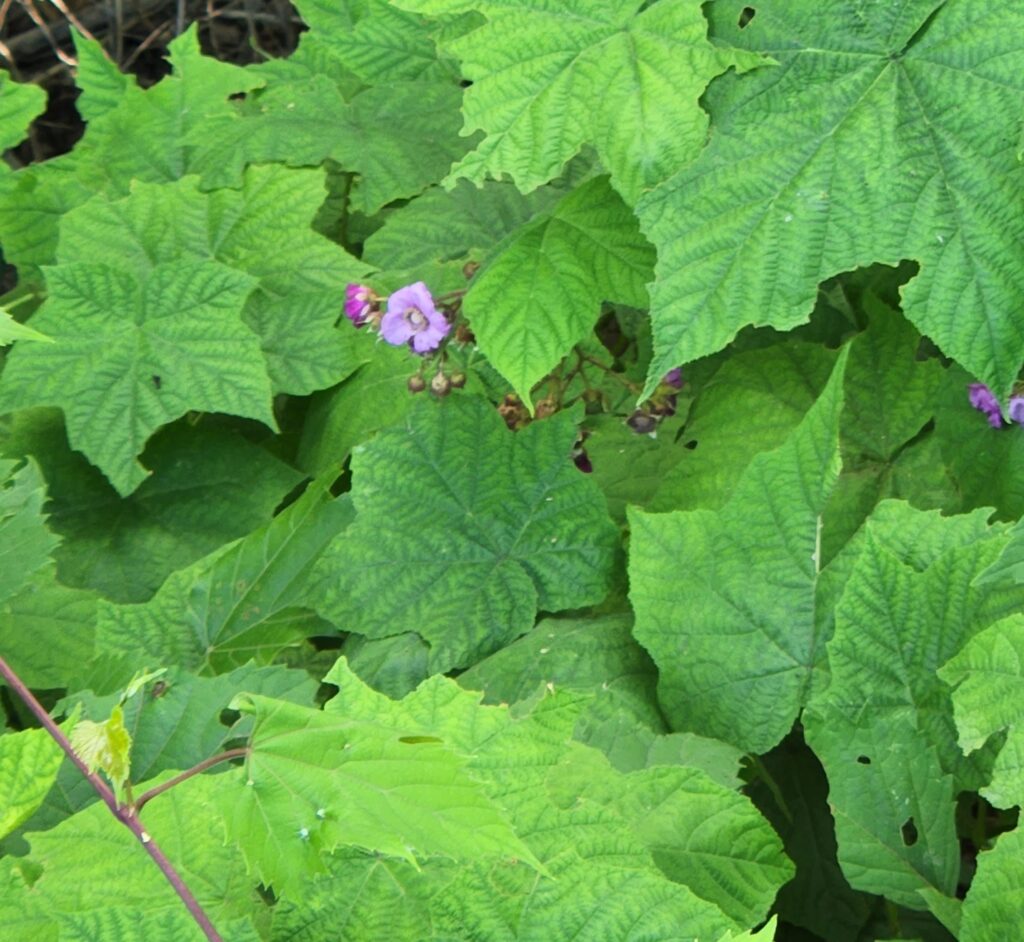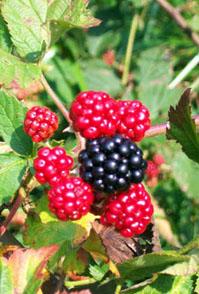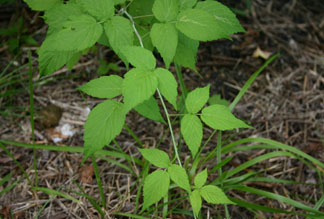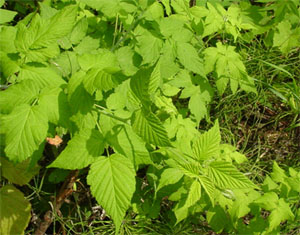Purple Flowering Raspberry – Rubus odoratus
General Information:
Rubus odoratus, commonly known as Purple Flowering Raspberry or Virginia Raspberry, is a deciduous shrub native to the eastern regions of North America. It belongs to the rose family (Rosaceae) and is closely related to other brambles like blackberries and raspberries.
Common Names:
Purple Flowering Raspberry is known by several common names, including Virginia Raspberry, Flowering Raspberry, and Thimbleberry.
Identification:
The plant can grow up to 6 feet tall and has large, dark green leaves with three to five lobes. The stem is prickly and covered with fine hairs. The flowers are pink to purple and have five petals, which give them a rose-like appearance. The fruit is a small, red raspberry that is edible and sweet but not as flavorful as other raspberry varieties.

Look-Alikes:
The plant can be confused with other raspberry or blackberry plants, especially when not in bloom. However, the plant’s distinctive pink to purple flowers make it easy to identify when in bloom.
Distribution:
This raspberry is native to the eastern regions of North America, from Quebec and Ontario south to Georgia and Alabama. It is found in a variety of habitats, including woodlands, meadows, and along roadsides and stream banks.
Preferred Habitat:
Purple Flowering Raspberry prefers well-drained soil and partial to full shade. It can tolerate a range of soil types, including sandy and rocky soils.
Edible Parts:
The fruit is edible and sweet but not as flavorful as other raspberry or blackberry varieties. The fruit can be eaten fresh, cooked, or used to make jams and jellies.
Harvest:
The fruit of ripens in late summer or early fall. It can be harvested by hand, but the prickly stems make it difficult to pick. It is recommended to wear gloves and long sleeves when harvesting.
Interesting Facts:
Purple Flowering Raspberry is a popular ornamental plant in gardens and landscaping due to its beautiful flowers.
The plant has historically been used for medicinal purposes by indigenous people in North America.
The leaves and roots were used to treat various ailments, including sore throats, coughs, and fevers.
This raspberry is an important food source for wildlife, including birds and small mammals.
In conclusion, this raspberry is a beautiful and useful native plant that deserves a place in any garden or landscape. Its striking pink to purple flowers, edible fruit, and wildlife value make it a great addition to any ecosystem.
Citations:
Lady Bird Johnson Wildflower Center. (2023). Rubus odoratus. Retrieved from https://www.wildflower.org/plants/result.php?id_plant=ruod
Missouri Botanical Garden. (2023). Rubus odoratus. Retrieved from https://www.missouribotanicalgarden.org/PlantFinder/PlantFinderDetails.aspx?kempercode=e681
United States Department of Agriculture. (2021). Plant Guide: Purple-flowering Raspberry (Rubus odoratus). Retrieved from https://plants.usda.gov/plantguide/pdf/pg_ruod.pdf

